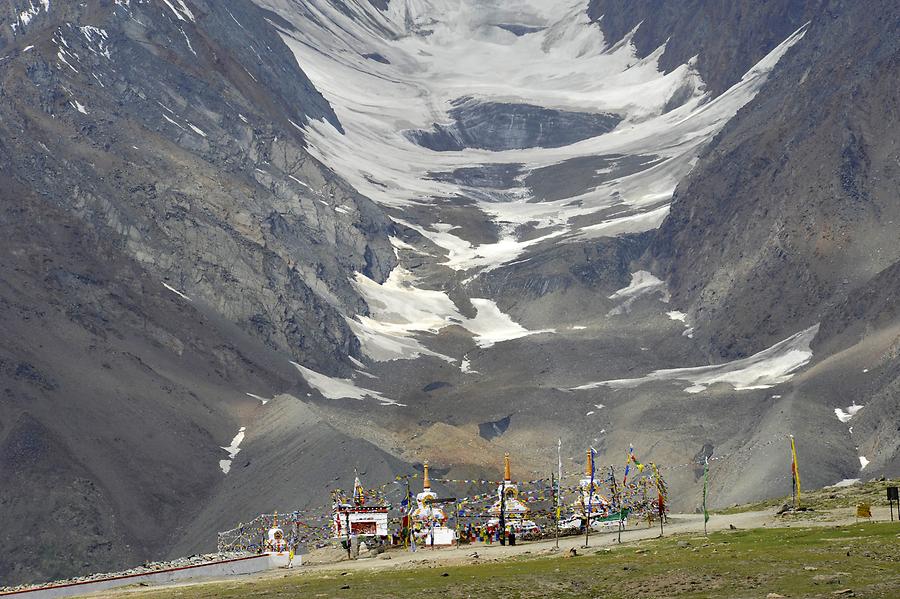Kunzum Pass - Summit; Stupas#

Kunzum Pass - Summit; Stupas, July 2011, © Gerhard Huber, under CC BY-NC 4.0 +Edu
Buddhistische Stupas, die im tibetischen Chörten genannt werden, markieren die Passhöhe des Kun Zum
Kunzum Pass, India
. Entstanden ist die Form der Stupa ursprünglich aus einem Grabhügel mit einem Stab in der Mitte, der die Verbindung zum Universum herstellte. Später hat der Buddhismus diese Idee übernommen. Einer Legende nach wurden die sterblichen Überreste des Buddha in die gesamte buddhistische Welt verteilt und dort in tausenden Stupas aufbewahrt. Daher symbolisieren sie auch den erleuchteten Geist des Buddha. Zusätzlich trägt der Wind die heiligen Mantras der tausenden Gebetsfahnen in die Welt, um die Leiden der Menschen zu lindern.
Buddhist stupas, which are called Chorten in Tibetan, mark the summit of the Kun Zum
Kunzum Pass, India
. The shape of the stupa was originally created from a burial mound with a staff in the middle, which made the connection to the universe. Later, Buddhism adopted this idea. According to legend, the mortal remains of the Buddha were distributed throughout the Buddhist world and kept there in thousands of stupas. Therefore, they also symbolize the enlightened mind of the Buddha. In addition, the wind carries the sacred mantra of the thousands of prayer flags into the world to relieve human suffering.